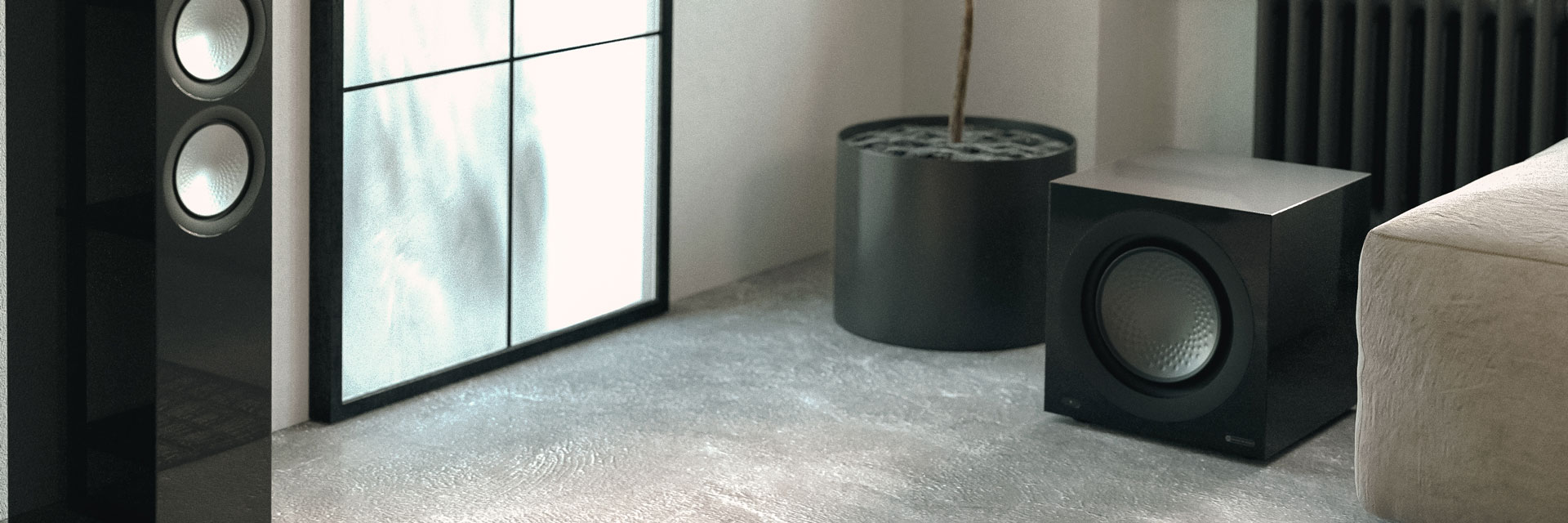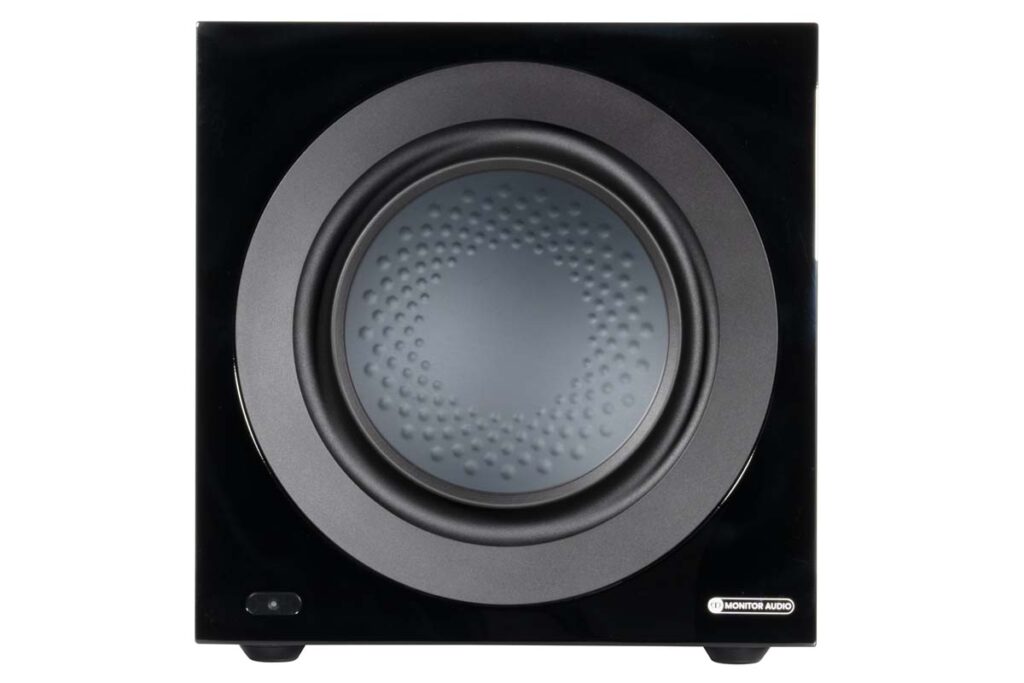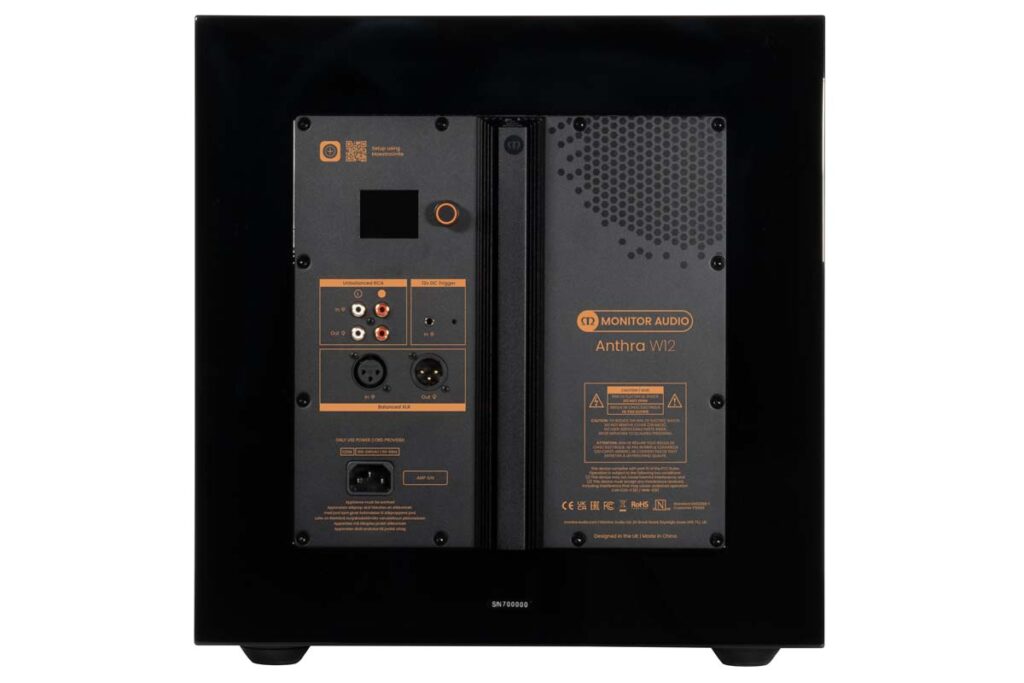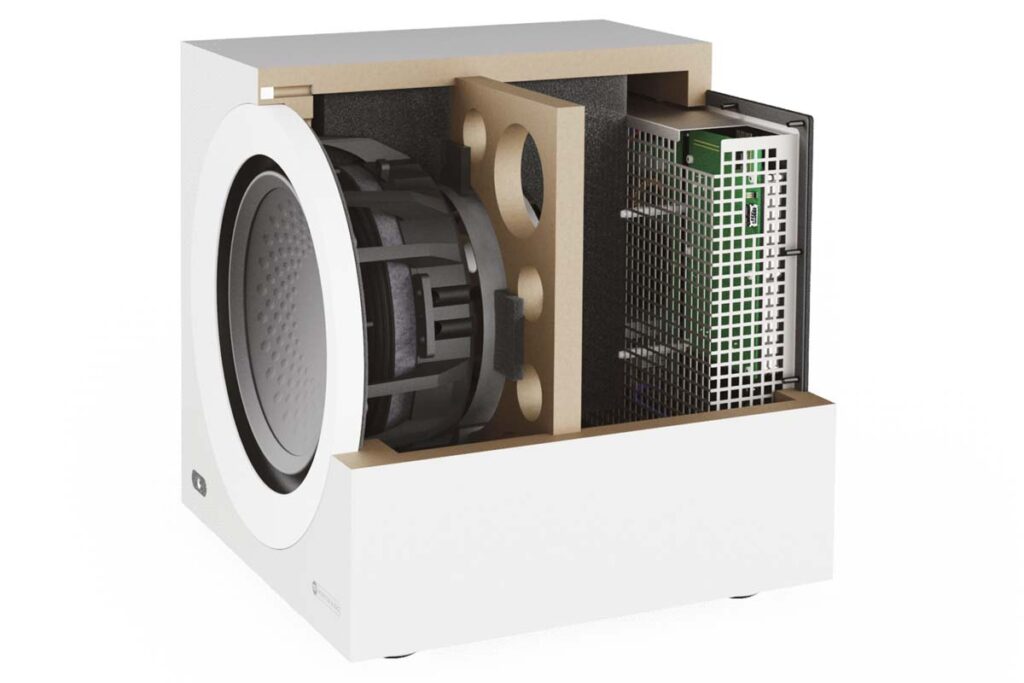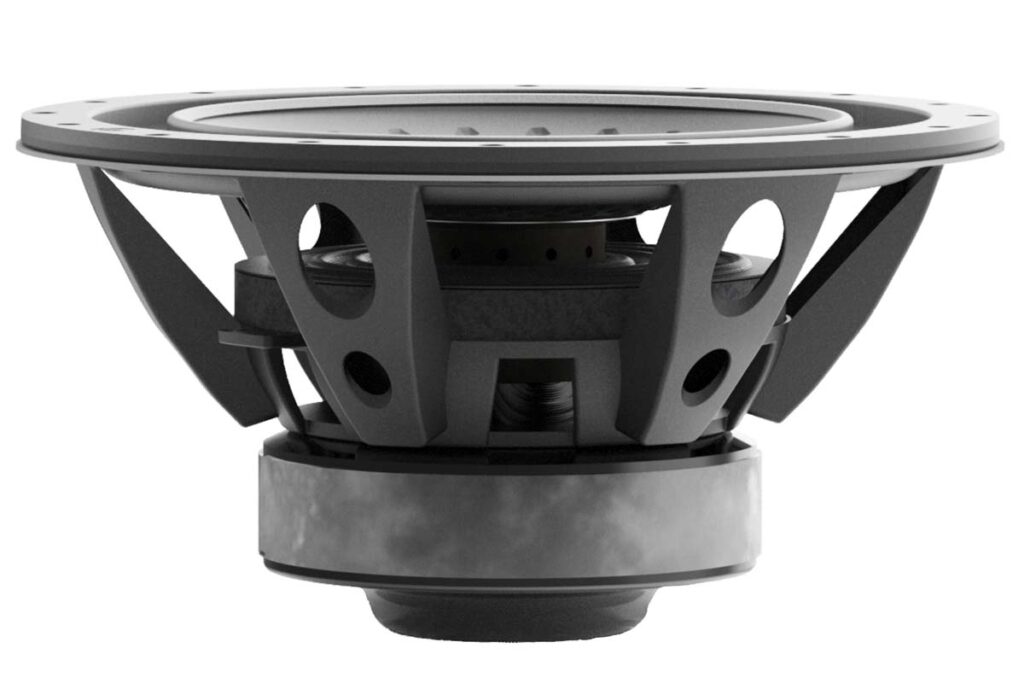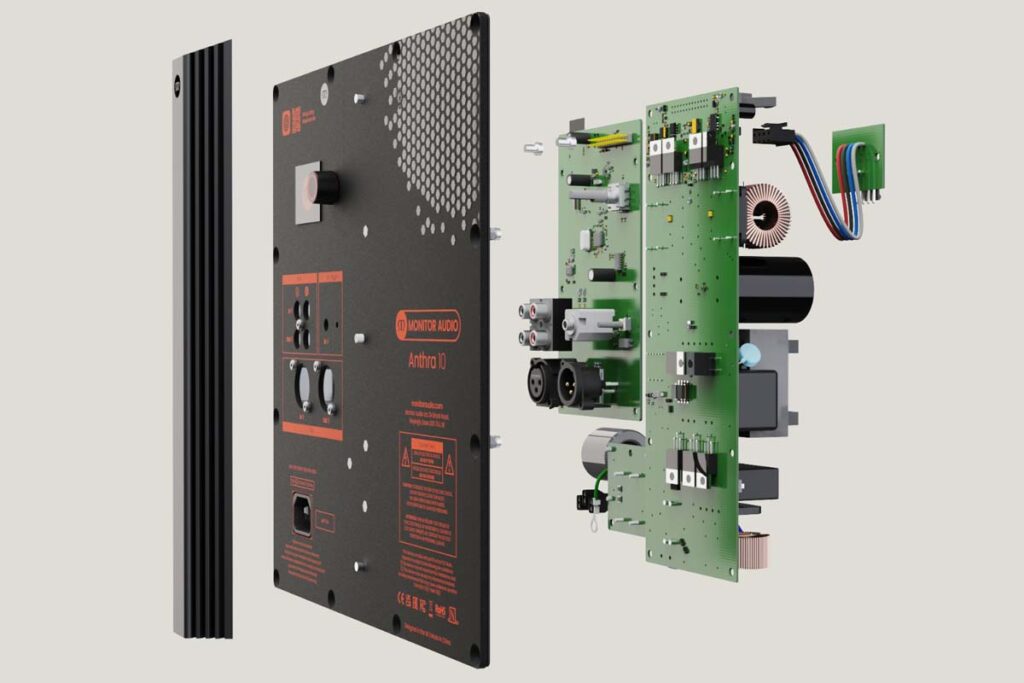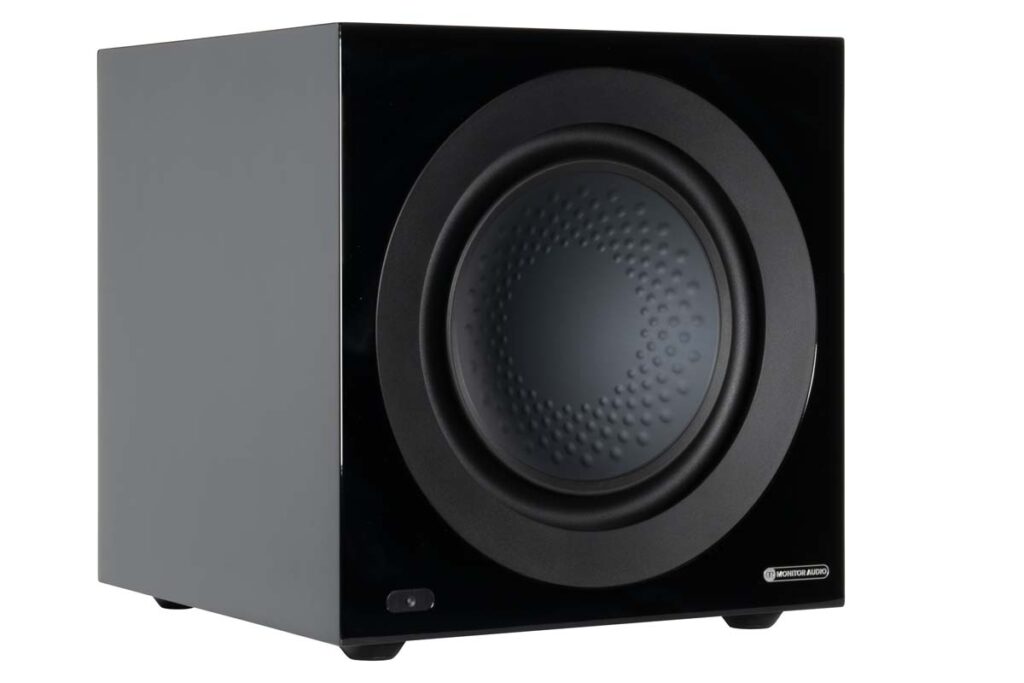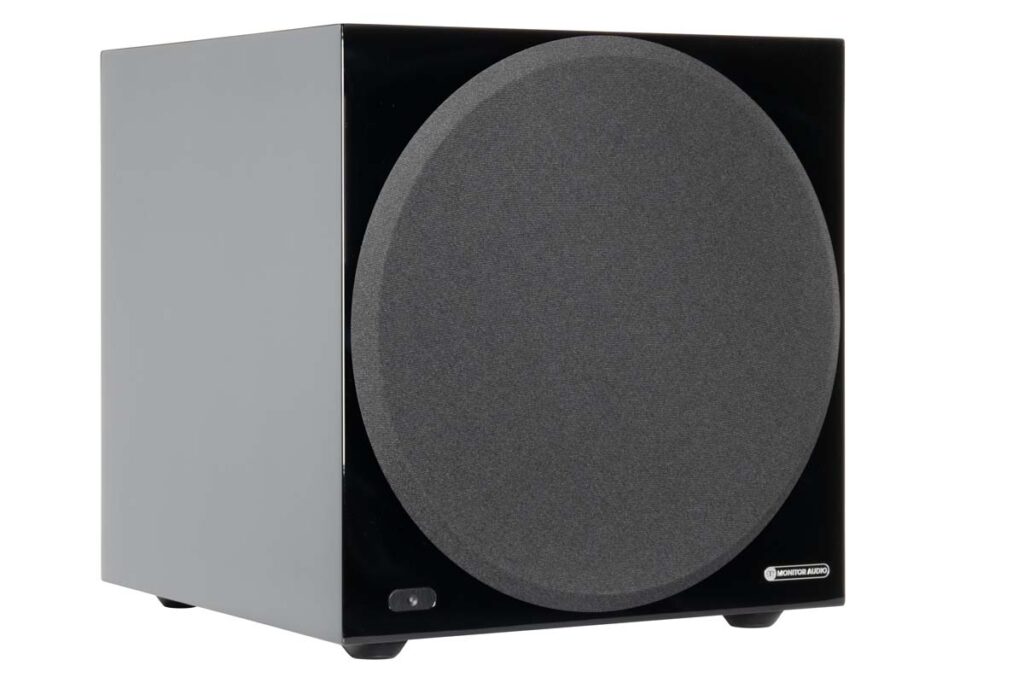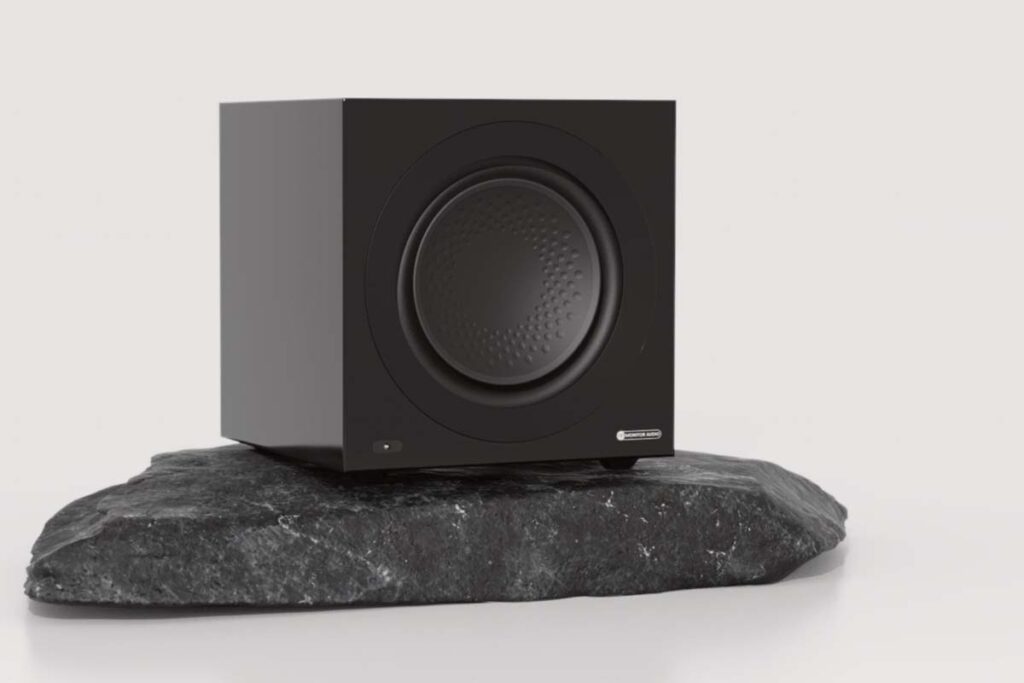They say a dwarf standing on the shoulders of a giant can see further than the giant himself. It is with great pleasure that I introduce the Monitor Audio Anthra W12 – a giant that is as good-looking as it is talented, yet modestly steps out of the limelight, instead propping up loudspeakers small and large to help them achieve new heights of sonic performance.
The construction of cathedrals sprang to my mind in the listening room the other day. Take Cologne Cathedral, for example: It rests on foundation blocks, some of which reach 16 meters underground. Of course, none of this is visible from the outside, but we all know that this magnificent building would inevitably collapse without this massive foundation. I’m sure you can already see where I’m going with this: a subwoofer plays a very similar role in a hi-fi setup. Set up correctly, you should not notice its presence, and yet it should be clear that the “sound structure” created by the speakers could not support itself quite like that without the leg up that the woofer provides.
The Monitor Audio Anthra W12 embodies this philosophy of integration like no other – I can spoil this much already: If you’re looking to embellish your stereo listening experience with brute, bone-shattering bass, the Anthra isn’t going to be your first choice. This already becomes apparent looking at some key specs: The fact that Monitor Audio has opted for a sealed box design for its new subwoofer line already indicates that the main focus here has been on precision and control in the low-end support. The W12 is the mid-range model, which, as the name suggests, is built around a 12-inch chassis that relies on Monitor Audio’s proven RST-II cone (RST stands for “Rigid Surface Technology”). The characteristic “dimples”, which provide additional stiffening of the cone, are hexagonal rather than round, giving the woofer a futuristic look in combination with the inverted surround and the heat sink in the shape of a slotted triangle sitting vertically on the back.
The astute tech nerd may wonder why RST II is used here and not the new RDT III (“Rigid Diaphragm Technology”). There are two reasons for this: Firstly, RDT III is a much more elaborate technology that would probably have single-handedly propelled the series into the next higher price category, and that – and this leads us to the second reason – without even achieving any appreciable gain in performance. The main advantage of the RDT-III composite cone is significantly lower distortion, especially above 800 hertz – obviously irrelevant for subwoofers. Above all, the ceramic-coated aluminum-magnesium cone used in the Anthra series offers an excellent stiffness-to-weight ratio and should therefore always be hot on the heels of even the hardest, fastest bass transients without showing the slightest hint of deformation – after all, it must never be thrown out of shape by the Class D power amplifier with its 900 watts RMS and 1700 watts impulse power.
The connection panel offers a limited yet versatile selection of options: RCA or XLR can be used for both input and output, enabling “daisy chaining” of up to four subwoofers via a pre-out on the amplifier. The left RCA input also serves as LFE if you want to use the Anthra in a home theater system. A 12-volt trigger input completes the suite. One option that some people may miss is high-level inputs. Many people swear by this type of connection, especially in the stereo sector, because it allows the subwoofer to pick up the same amplifier sound signature as the main speakers and thus, in theory, integrate even more harmoniously into the setup. From a purely technical point of view, the signal transfer from the pre-out is of course superior because the signal is passed through fewer components. Ultimately, this is a question of sound philosophy.
Preferably Remote-Controlled
Incidentally, the control panel is even more minimal: a knurled rotary/push control with an LCD display allows basic adjustments to be made by adjusting the crossover frequency and level as well as selecting a number of preset equalizer curves. However, the tool of choice for Anthra configuration is Monitor Audio’s proprietary MaestroUnite app, which not only allows comprehensive adjustment of the low-pass filter (in addition to crossover frequency and level, the phase and slope can also be adjusted here), but also controls the parametric eight-band equalizer.
I normally get a bit annoyed at having to download a separate app for absolutely everything I own, from the fridge to the alarm clock – but with a subwoofer with such a wide range of functions, I’m happy to make an exception because it’s simply the most sensible way to operate such a device properly: Although a fully equipped rear control panel could certainly display all the setting options, it is enormously helpful to be able to make all changes from the listening position and assess the sonic effects immediately instead of constantly commuting back and forth between the woofer and the couch. And as a not so unimportant side note, I am pleased to report that the app does not require a user account – so we can experiment with our sub to our heart’s content without the need to sell our data soul to the ether devil.
While we’re on the subject of “playing and experimenting”: Let’s leave technology and theory behind and turn our attention to music. We have not one, but two pairs of loudspeakers at our disposal as playing partners: With the Monitor Audio Silver 50 7G, we have a dinky standmount speaker in the listening room that just begs for support from below, especially in view of the 40 square meter room size. In addition, we ordered the Silver 300 7G – a still modestly sized, but definitely full-grown floorstanding speaker that can comfortably handle both our room size and deep bass signals. With the absence of a suitable center speaker, we have demonstratively stopped one step short of a 5.1 system and deliberately stuck with stereophony – the fact that Jens Ragenow from the German Pannes distributor recommends closing the bass reflex ports of the main speakers when integrating subwoofers into hi-fi systems already give us plenty enough opportunity for experimentation. Monitor Audio models generally come with the necessary foam plugs included.
A quick test with the stand-alone Silver 50 reveals the obvious: There is no need for a detailed sound description; the little ones are simply not designed for rooms of this size. I therefore don’t even bother trying to dial in the subwoofer with the speaker ports open, but rather seal up the pipes right away. Although this requires a higher crossover point, it saves the compact speakers a lot of excursion, which should benefit the distortion-free SPL ceiling.
The Subwoofer Crawl
After finding the optimum position by means of a “subwoofer crawl”, in which the woofer is moved to the listening position and I crawl around the room on all fours (more details on this in FIDELITY No. 68), I place it on the determined spot and start setting the crossover point and level. In my particular case, there’s no need to adjust the phase because the bass assistant is positioned on the outside next to the left speaker and is therefore equidistant to the listening position, so the two are in phase anyway. What I do adjust in the app, however, is the slope: set to -24 decibels/octave by default, it matches the bass roll-off of ported speakers. As I have closed off the reflex channels, the speakers only drop by 12 dB/oct. below the lower corner frequency – so I adjust the filter of the subwoofer accordingly. I use “Breaking Down Blues” by Glim Spanky (Walking On Fire) as a test track: The live recording combines a fairly complete checklist of test criteria with its consistent, fat 4/4 kick drum beat, backing vocals placed far back and the obligatory crowd noises. Also, I really like this tune – never underestimate the importance of motivation! The crossover point ends up sitting at an unsurprising 120 Hz, the level at a somewhat surprising -10 decibels – at higher settings it starts to become noticeable that the speakers are not solely responsible for the music. Not that you can locate the woofer, but the bass then becomes dominant in a certain way, drawing attention to itself and ultimately distracting from the music. With the above settings, the bass doesn’t massage my kidneys, but the setup gives me a good idea of the dimensions of the concert hall, I can clearly follow the deep rumbling electric bass line and never get the impression that anything is missing at any point. However, there are still limits to the fun with the Silver 50 – at reasonable volumes, the bookshelf speakers keep their composure in an exemplary manner, but as I crank it up, they sound increasingly strained, which is no shame given their dimensions.
Low-End Extension and Control
The first big surprise comes when I switch to the Silver 300 without a subwoofer: they exhibit a much higher SPL ceiling, and in a direct comparison, the bass doesn’t seem lacking in the slightest. Nevertheless, it is immediately noticeable that the backing vocals suddenly appear not only further forward, but also less horizontally fanned out. So I put in the foam plugs and tweak the settings until everything is just right. Again, the crossover frequency ends up relatively high at 95 Hertz and the level ends up at -9. Given the higher sensitivity of the floorstanding speakers, I would have expected a higher volume setting, but I ignore the displayed number as best I can – my ears shall be the final judge. The stage opens up again without any noticeable change to the tonality. However, something more happens: the singer’s voice now appears even more palpable than before in the center of the stage – not blooming, actually rather a little more compact, but more physical and in sharper focus. At the same time, I can follow the electric bass better: It doesn’t seem louder, but more clearly textured and therefore easier to make out. I chalk this up to a small fact that can easily be overlooked. By closing off the reflex channels, I have turned a bass reflex system into a sealed box one – complete with superior transient response in the low-end.
To check for proper tonality, I put on “Tenderly” by Dianne Reeves in duet with Joe Williams from her album The Grand Encounter as the next track. Just to try it out, I take the plugs out of the Silver 300 and quickly realize that even after quite a bit of fiddling with the settings, I can’t seem to find a really satisfying setting: Even though everything sounds right for the most part, there is always this one pitch at which Joe Williams’ baritone in particular thickens excessively – infrequent moments of inconsistency that nevertheless mar the overall impression. So the plugs go right back in and I actually end up with practically the same settings as in the last piece – a good sign. Here, too, I notice the improvement in terms of imaging. At first Williams sings alone, but after a few verses Dianne Reeves takes over. Without Anthra, her voice seems to float a little for the first two verses while my ear-brain apparatus makes the necessary calculations and places the vocalist perfectly as soon as it’s done – once the subwoofer is in on the action, everything clicks into place from the very first moment. Here, too, the tonality remains almost completely unchanged, the vocalists’ presentation is somewhat more compact, but at the same time more corporeal. An increase in bass extension is indeed noticeable, but only in tracks that really dig deep, as the Silver 300 doesn’t really show any weakness here anyway. In “Into The Valley” by The Dead South (Good Company), it is only the subwoofer that lends full authority to the bowed double basses in the chorus. Otherwise, the Monitor Audio Anthra W12 takes itself out of the action and ensures, practically unnoticed, that the stage and the overall musical presentation work in a way that is evidently not possible with just a pair of stereo speakers.
Accompanying Equipment
CD player: Ayon CD-3sx, Audio Note CD 3.1x, Accuphase DP-570 | Network player/DAC: Lumin X1, Soulnote D-3, Aavik S-580 | Turntable: AVM Rotation R5. 3 MK2 | Preamplifier: Accuphase C-2300, Phasemation CM-2200 | Integrated amplifier: Arcam Radia A5, Line Magnetic LM-88IA | Power amplifier: Burmester 216, Accuphase P-7500 | Loudspeakers: Monitor Audio Silver 50 7G, Monitor Audio Silver 300 7G | Racks: Solidsteel, Finite Elemente, Creaktiv | Cables: AudioQuest, HMS, in-akustik
Subwoofer Monitor Audio Anthra W12
Concept: Sealed box subwoofer with parametric equalizer | Chassis: RST II (12″) with C-CAM (Ceramic Coated Aluminium Magnesium) metal cone and copper-coated aluminium voice coil | Amplifier: 900 W RMS/1700 W pulse power, Class D | Crossover frequency: 20 to 200 Hz, adjustable in 5 Hz steps; slope selectable in 6 dB steps between -6 and -48 dB/oct. | Inputs: RCA (line and LFE), XLR | Outputs: RCA, XLR for daisy-chain operation | Special features: Full adjustability via MaestroUnite app, parametric 8-band equalizer | Weight: 32.4 kg | Dimensions (W/H/D): 37.4/37.4/37.4 cm | Warranty period: 5 years | Price: around € 2450
Pannes
Berliner Straße 3
23795 Bad Segeberg

